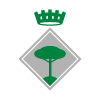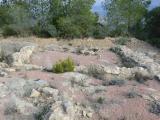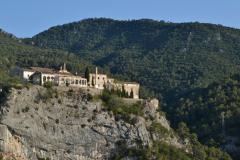Convent, hermitage and spa of Cardó
CONVENT, HERMITAGE AND SPA OF CARDÓ
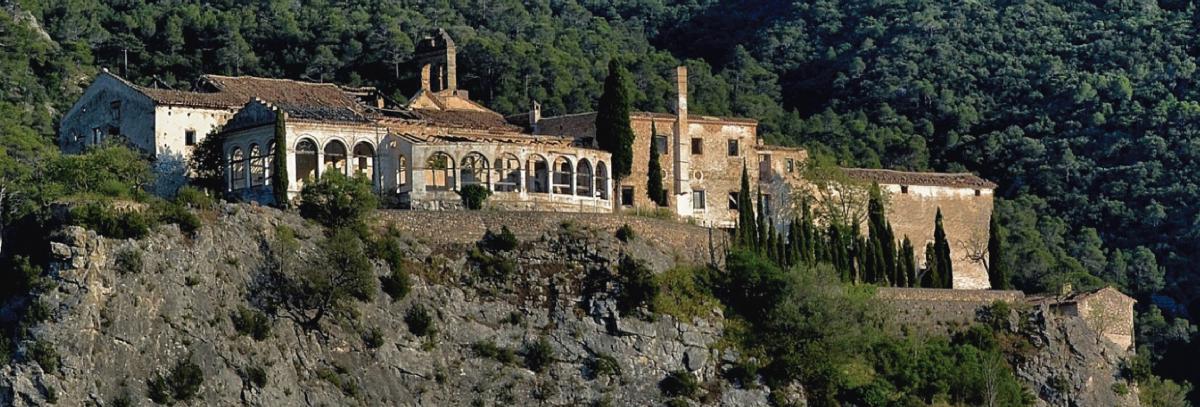
The Cardó Desert, which became a spa in the 19th century, is located on the top of the spectacular cliff of Salt del Frare, in the Sierra de Cardó, in the municipality of Benifallet. It can be accessed by road from Rasquera and by track from Tivenys. In Baroque style, the "Desert" (name given to certain hermits, convents and monasteries of some religious orders located on a plain) is dated between the 17th and 18th centuries.
The first works began in 1604. The first buildings were built by three friars and a pawn. In the first place, they enabled housing a cave located at the base of the rock where the Ermita de la Columna sits, building only a wall to close the entrance of the cave, known today as the cave of the Founder.
Initially a modest first building was built, located in the middle of the desert and consisting of a small house and a chapel of small dimensions, made of stones and mud, in front of the gate of the designed monastery. The purchase of the land and the taking of possession of the valley occurred in 1606 and on April 6 a commemorative tombstone was placed on the facade of the chapel (tombstone that was then placed on the facade of the monastery). From this moment began the construction of the convent and the 14 hermitages, whose structure was very similar: height of about 3-4 meters, between 6 and 7 meters long and were distributed in four rooms (a portico, an oratory, a cell and a small kitchen).

The original building was built in 1606 by the Carmelite Fra Pau de Crist, who established the community of the Discalced Carmelites. Under the name of Sant Hilari it consisted, in addition to the conventional buildings, of a group of 14 hermitages scattered around. There are still up those of Sant José, San Roque, San Simeón or hermitage of the Column built on a rock that has this form, Santa Inés and Santa María del Borboll.

From 1606 and for about two centuries, life in the desert was monastic. On May 12, 1607, the Blessed Sacrament was finally moved to the new church and the religious community was installed. The Community was officially installed in 1617.

CONFISCATION OF MENDIZÁBAL: THE SPA
During the Carlist war the friars had to leave the place and take refuge in the nearby villages (Tivenys, Rasquera and Benifallet). This abandonment was definitive since it coincided with the decree of confiscation of the minister Mendizábal of 1836. A portion of Cardó was auctioned in 1844. Abandonment and looting dispersed the monks' belongings: tapestries, books, paintings and valuables became private property. Most of the books in the library, which apparently had a large number of volumes, were burned.
For two decades Cardó was abandoned, as the farmland was scarce and the high transport costs of the goods obtained from the farms made its trade unfeasible.
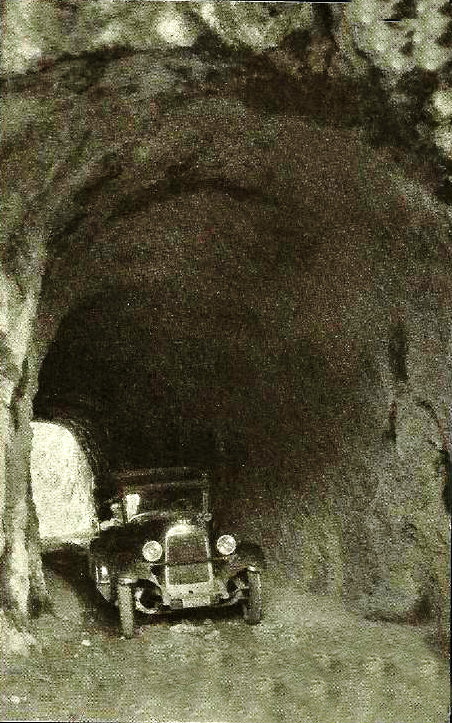
In 1866 some businessmen from Tortosa decided to transform the ruins of the monastery into a place of baths taking advantage of the properties of its waters. Part of the dilapidated outbuildings were rebuilt and those that were in good condition were taken advantage of. The property was State property. In 1870, the building remained state property, but the farmland next to the monastery was already owned by José Monclús, although the sources were of free use. In 1872 Salvador Cabestany Gasol bought, together with his uncle, four estates of Cardó in which the buildings of the Monastery were included. By 1877 he was the sole owner of these estates. By 1879 the cloisters, corridors and other dependencies had been whitewashed. In the old church, the dining room and cells of the Prior, the sacristy and the adjoining rooms were provisionally installed, which were enabled as the owner’s dwelling, while the rest of the cells were converted into guest rooms. Later other bodies were added to the building, the central courtyard of the cloister was covered with glass to turn it into a cafeteria-restaurant and then the dining room was moved to transform the church into a party room. For the cult sehabía enabled a small room covered with a vault of the corridor "Fortí", with shells at their angles that, apparently, had been the private chapel of the Prior or chapel of the Sacrament.

In 1883 Salvador Cabestany restored the buildings and turned them into a modern spa. In 1884 many of these reforms were already evident. That same year the current chapel was built on top of an old dependency of the monastery. In 1885 a road was opened between Tivenys and the Monastery and in 1887 it was extended and became the road that would link Cardó with Tortosa.
In 1886 he acquired the property of José Monclús, with which Salvador Cabestany remained the only owner of the valley. In 1887 the waters of Cardó were declared of public utility.
At the end of the 19th century the place enjoyed great fame. In 1899 Salvador Cabestany gave a great boost to the spa with the construction of Sant Salvador. To build it it was necessary to demolish the old aqueduct that led the water from the source of the Column to the Monastery. Salvador Cabestany had given permission to Margenat to build a floor above the rooms of the "Fortí", to use it for his summer. Later, this apartment was converted into guest rooms, on one side and another of the wide corridor.
In 1902 the new road to Rasquera was built. It was necessary to build a tunnel to enter the properties of the Spa, finished in 1903, and in 1904 it was possible to inaugurate the new road, which increased the number of visitors, taking advantage of the railway station of Móra la Nova. With the death of Salvador Cabestany, the Spa became the property of his children in 1912.
CIVIL WAR
During the Civil War the spa was the headquarters of the International Brigades and in 1938 an emergency hospital of the Republican army was established coinciding with the Battle of the Ebro. In 1940 Ricardo Viñas Geis opened the spa again investing a large capital. The new owner initiated a series of reforms, of which the most important were the construction of the new and large dining room and the construction of the Plaza de los Tilos.
With the construction of the new dining room, the former dining room first became a large kitchen. The second dining room, with a long table common to all the diners, was where the service room is today, and under its slabs was the bones that, adjacent to its cemetery, had the Carmelite friars.
The spa had electric lighting, tennis court, swimming pool, cinema and dance hall until 1967, when the set of buildings was abandoned.

In 1974, the property was acquired by Enric Nomen Borràs, who started a water bottling plant at Fuentes del Borboll. In 1981 it was acquired by Nestlé, S.A. and in 1987 it passed into the hands of Abengoa, S.A., to finally be acquired in 1989 by Llet Pascual, who initiated a transformation of the industrial complex. In 2007, bottling stopped.
